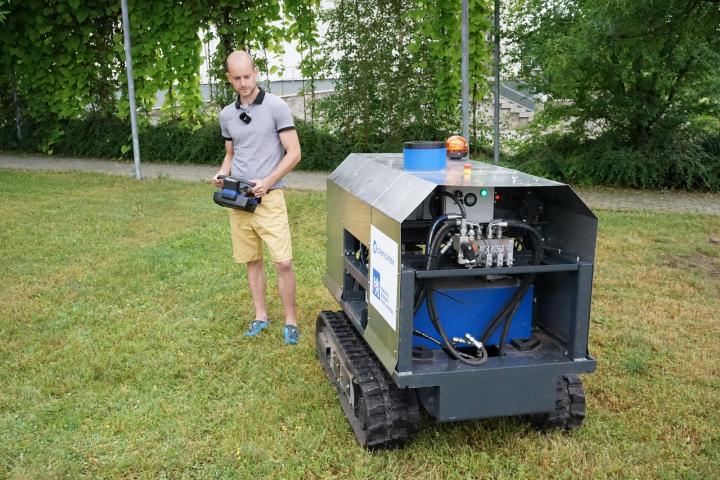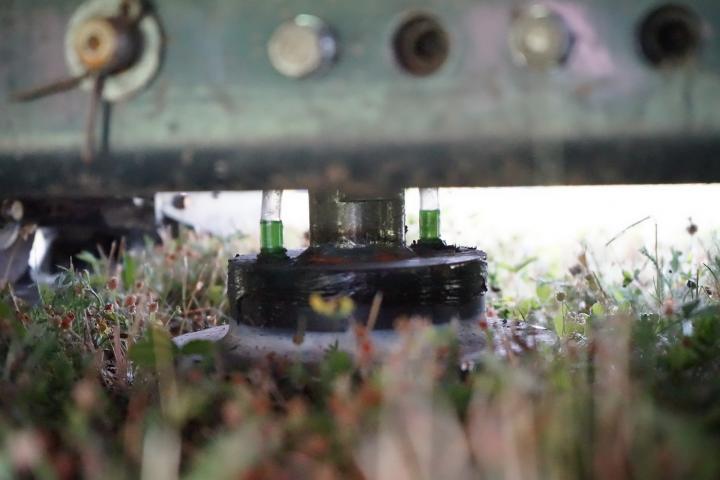
However, field tests and overall evaluation usually take an unpleasantly long time. A new device, the VSAKOŇ automatic field kit for measuring infiltration parameters, will speed them up. It was developed at the Faculty of Mechanical Engineering in cooperation with CHEMCOMEX, a.s. within the project FV 30321, with the support of the MIT Trio programme. The development lasted three years. The engineers gradually tested various types of chassis, drive and control and measuring systems as well as the fairing. The field trials of the prototype ended in December 2020 with a success that has a European dimension. The pumping tests comply not only with the Czech standard but also with the European standard EN ISO 22282-5.
The main creator of VSAKOŇ, Ing. Martin Dub, Ph.D. from the Institute of Design and Machine Parts, Faculty of Mechanical Engineering describes the device:
"The resulting prototype is based on the Bobcat E 10 crawler chassis. The power source is a Winston Life 90 Ah traction battery, movement and working operations are provided by a control unit, and remote control is provided by a Scanreco 3G Reciever receiver. The dosing module is based on the Arduino platform and includes an electromechanical valve, a tank and fitting for water distribution, a calibrated measuring vessel with electronic level sensing and electronic modules for level sensors."
Is the control of the Vsakoň complicated?
Not at all. VSAKOŇ works automatically. Once the desired location is reached, the test itself is triggered wirelessly from a tablet or laptop from the developed app, where the entire test can be monitored.
Can you describe how the device works?
The chassis manoeuvres well in the terrain. At a location determined by the hydrogeologist, a standard 200 mm diameter test cylinder is hydraulically pushed to a depth of at least 50 mm. The enclosed area is filled with water and then the seepage rate is automatically measured. The duration of the seepage test varies depending on the type of soil and rock.
Where did the field tests take place?
There were seven tests in total. They took place in different locations to test all the capabilities on different types of subsoil. For example, on Prague's Charles Square or on the body of several future transport structures.
Ing. Vojtěch Pilný from CHEMCOMEX, a.s. answers what he sees as the biggest benefit of the Vsakoň:
The device successfully replaces the old-fashioned digs or dredged probes or boreholes, in which the permeability of the soil is determined by a seepage test and the rate of seepage of water at the site of the planned construction is measured. It operates automatically and its size and weight of under one tonne allows easy transport by van or car on a trailer. Overall, VSAKOŇ not only saves time when conducting field seepage tests, but also allows us to more quickly evaluate larger volumes of measured data that can then be interpreted across the board.
Contact person: Ing. Martin Dub, Ph.D

